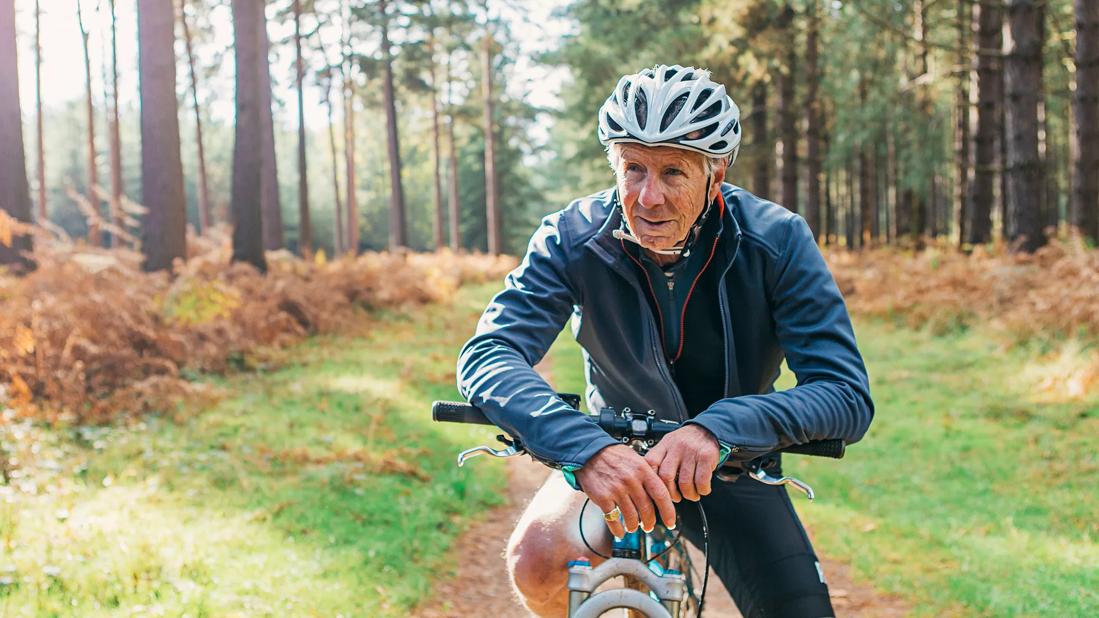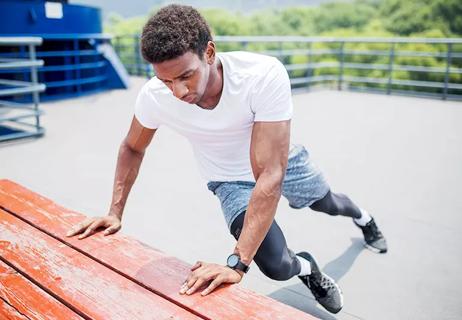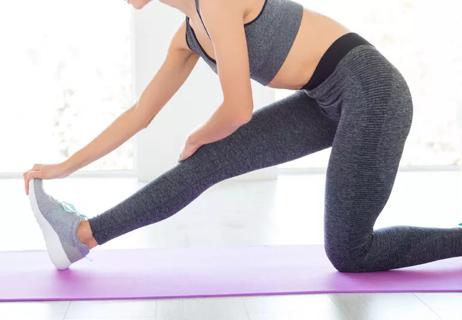Swimming, cycling and walking can help keep your hips strong and mobile

When you have hip arthritis, especially if it’s painful, you may think you need to limit your activities. But your joints and overall fitness benefit from staying active.
Advertisement
Cleveland Clinic is a non-profit academic medical center. Advertising on our site helps support our mission. We do not endorse non-Cleveland Clinic products or services. Policy
“When we’re talking about hip arthritis, we’re usually talking about osteoarthritis, as that’s most common,” says physical therapist Justin Nessel, DPT. “This is an inflammatory disease of the joint, and it gets worse over time — changing the shape of the hip joint and making it harder and more painful to move.”
Hip arthritis can happen to anyone, but it’s more common in people who have had a significant injury to the hip joint in the past. “It’s a myth that running or high-impact activities, in moderation, can cause arthritis,” he shares. “It’s only if you’re doing these activities in excess that they may contribute to the development of arthritis. But on their own, they don’t cause arthritis.”
Dr. Nessel explains why movement is good for your joints and which types of exercise are best for hip arthritis.
As arthritis causes changes to your hip joint, it affects how your joint functions and you can lose your range of motion. Walking and going up and down stairs can become more painful and challenging.
Dr. Nessel says exercise can’t reverse arthritis, but it can help you maintain:
Advertisement
He adds that there’s no one best exercise for hip arthritis. “It’s most important to pick something you like to do, as long as it doesn’t cause you more pain,” he says.
Good options for exercise when you have hip arthritis are:
“Walking includes low-grade impact, which is really healthy for your hips and all your joints,” says Dr. Nessel. “It uses nearly all the muscles in your legs and trunk, so it’s a good bang for your buck for general health and fitness.”
Walking can be as simple as putting on a comfortable pair of shoes and heading out the door. You can also try:
But Dr. Nessel recognizes that some people just don’t enjoy walking. And depending on where you live, you may not have a good place to walk. No worries, you have several other hip-friendly options for staying active.
Exercising in a pool can be great for your joints because the buoyancy in water takes some of the pressure off. “If your hips are sensitive to pressure when you have arthritis, aquatic exercise can offload some of the weight you feel when you’re on land,” explains Dr. Nessel. “It can allow you to move longer than you might be able to tolerate on land.”
Aquatic exercises (sometimes called hydrotherapy) that benefit hip arthritis include:
“Cycling is a good alternative for people who don’t like to walk,” notes Dr. Nessel. “It’s a great way to keep your legs moving, but with a smaller range of motion than some other exercises. That may be more tolerable for some people with hip issues.”
Even with a smaller range of motion, the resistance of a bike still allows you to get the strengthening benefit from exercise.
There are plenty of ways to work cycling into your routine, including:
“Strength training is one of the least used but most beneficial forms of exercise for hip arthritis,” states Dr. Nessel.
He recommends strength training two or three times a week, making sure not to work the same muscles two days in a row. “Strengthening the muscles around the hip joint helps your hips work better and with less pain,” he says.
Weight-bearing exercise is important because walking or cardio doesn’t build enough muscle or help you preserve strength. “Challenging your muscles’ ability to move weight is important, especially as we get older. As we age, we lose muscle mass and strength every year if we’re not doing some kind of resistance training to offset that loss,” he explains.
Advertisement
Strength training can be any movement with added resistance, and you don’t have to lift huge weights to benefit. Try:
“Yoga and stretching are excellent ways to preserve and build flexibility,” says Dr. Nessel. Yoga is a low-impact mind-body exercise that can help with balance, flexibility and strength. “The key with this or any other exercise is not pushing through pain because that can make arthritis worse,” he notes.
Dr. Nessel emphasizes that you can still do a broad range of activities when you have hip arthritis. “Don’t be afraid to move,” he says. “It’s less about avoiding activities and more about finding exercise that works for you.”
Whatever exercise you choose, aim for something you enjoy and sessions that are challenging but never painful on your hips. If you’d like specific exercises tailored to your preferences and fitness level, a physical therapist can be your guide.
Advertisement
Learn more about our editorial process.
Advertisement

Stretching and strengthening your hips can help improve flexibility and relieve pressure

Your bone structure determines whether you have a visible dent between your hips and your thighs

Yes, but you have to go well beyond stretches and yoga poses

Even yoga or pilates can cause issues

Physical activity can help preserve and improve your cognitive function and fend off dementia, stroke and other health concerns

Lower-intensity workouts can deliver high-quality health and fitness results

Raspberries are packed with nutrients that can reduce inflammation and prevent chronic diseases

Incremental changes in your exercise routine can improve your strength and endurance over time

Babies can get congested easily, but you can calm their cough by keeping them hydrated, using nasal drops and running a humidifier

Weight loss may cause loose, sagging skin and muscle loss to your rear

Several conditions, like vitiligo and fungal infection, can cause a loss of pigmentation, leading to white spots or patches on your skin